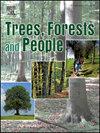Effectiveness of protected areas in containing the loss of Peruvian Amazonian forests
IF 2.7
Q1 FORESTRY
引用次数: 0
Abstract
Peruvian Amazonian Forests (PAF), vital for biodiversity, climate, and human well-being, lost 2.92M ha during 2001–2022, mainly due to anthropogenic activities. This prompted strategies to conserve and protect the PAF, such as land use and natural resource restrictions, with natural protected areas (NPAs) being the main strategy. This study evaluated the effectiveness of 41 NPAs in containing deforestation in the PAF by analyzing national spatial data. An Effectiveness Index (EI) was constructed by adding five standardized parameters: (1) the percentage of deforested area (DA%) and (2) its annual rate of change (DAr) between 2000 and 2022 inside each NPA, (3) the difference in DAr between NPAs and their surrounding areas, (4) their corresponding ecoregions, and (5) the entire PAF. In 2000, the DA% was 7.15 % of the PAF, increasing to 10.88 % in 2022. NPAs showed lower DAr than their surrounding areas and ecoregions, except for five NPAs. Of the 41 NPAs, nine were non-effective (EI≤3), 31 moderately effective (3<EI<4), and only one effective (EI≥4). Indirect-use NPAs (strict with integral protection) were slightly more effective than direct-use NPAs (where sustainable use is allowed). Among national categories, the 11 National Parks, equivalent to IUCN Category II, had the highest average EI (3.414). In general, NPAs have shown moderate effective in containing deforestation, and require risk-specific mitigation strategies, especially in NPAs with low DA% but high DAr. Finally, a quantitative and systematic assessment tool is provided, which can improve the formulation of strategies to mitigate deforestation and preserve crucial ecosystem services in PAF.
保护区在遏制秘鲁亚马逊森林流失方面的有效性
对生物多样性、气候和人类福祉至关重要的秘鲁亚马逊森林(PAF)在2001年至2022年期间损失了292万公顷,主要原因是人为活动。这促成了养护和保护太平洋保护区的战略,例如土地使用和自然资源限制,其中自然保护区是主要战略。本研究通过分析国家空间数据,评价了41个国家保护区在控制森林砍伐方面的有效性。通过添加5个标准化参数(1)每个国家保护区2000 - 2022年间的森林砍伐面积百分比(DA%)和年变化率(DAr),(3)国家保护区与周边地区的DAr差异,(4)相应的生态区,(5)整个国家保护区的有效性指数(EI)。2000年的DA占PAF的7.15%,到2022年增加到10.88%。除5个保护区外,其他保护区的DAr均低于周边地区和生态区。41个npa中,无效9个(EI≤3),中等有效31个(3<EI<4),有效1个(EI≥4)。间接使用的国家保护区(严格遵守整体保护)比直接使用的国家保护区(允许可持续使用)稍微有效一些。在国家类别中,相当于IUCN II类的11个国家公园的平均EI最高,为3.414。总的来说,国家保护区在遏制森林砍伐方面显示出中等效果,需要采取针对风险的缓解战略,特别是在DA%低但DAr高的国家保护区。最后,提供了一个定量和系统的评估工具,可以改进PAF减缓森林砍伐和保护关键生态系统服务的战略制定。
本文章由计算机程序翻译,如有差异,请以英文原文为准。
求助全文
约1分钟内获得全文
求助全文
来源期刊

Trees, Forests and People
Economics, Econometrics and Finance-Economics, Econometrics and Finance (miscellaneous)
CiteScore
4.30
自引率
7.40%
发文量
172
审稿时长
56 days
 求助内容:
求助内容: 应助结果提醒方式:
应助结果提醒方式:


